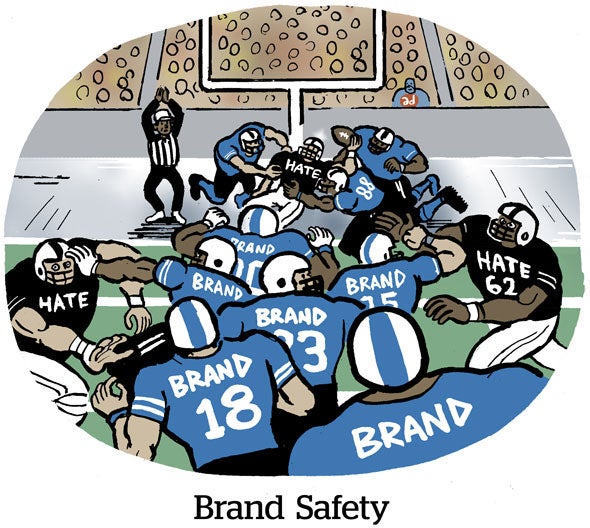If the digital ad market is a storm, DoubleVerify (DV) is someone in a puffy down jacket and water-resistant boots. In other words, insulated.
Thanks to its fixed-fee, volume-based model, DV can subsist when budgets flit from channel to channel or when ad rates decline. “Our business model doesn’t feel that pain when CPMs go down because we’re not taking a rev share,” CEO Mark Zagorski told investors on Thursday.
During a quarter when many companies are playing Pin the Blame on the Macroenvironment, the ad verification provider’s Q3 revenue rose 28% YOY to $144 million.
Activation revenue, which refers to DV’s brand safety and suitability products, grew 31% YOY to $81.7 million. The growth came largely from DV’s programmatic product, which increased 40% (two-thirds of that growth derives from existing advertisers using the product in more markets, versus a third from new advertisers). It comprised 57% of total Q3 revenue, up from 55% a year ago.
Meanwhile, supply-side revenue, which, at $11 million, accounted for just 8% of total Q3 revenue, fell 2% YOY. Zagorski attributed the decline to two SSP clients merging and consolidating their business and a third SSP being acquired.
DV stock rose about 1% after reporting earnings.
Sock it to me, social
Short-form video – be it YouTube Shorts, Meta Reels or TikTok – is “firing on all cylinders,” Zagorski said, and “business is booming.”
Overall, DV classifies 130% more content on social platforms than it did a year ago, he said. For instance, the company started offering viewability and invalid traffic measurement across YouTube Shorts inventory in the third quarter. TikTok Q3 revenues were almost double the revenue from the same period last year.
But Meta, already the largest contributor to DV’s social revenue, remains its cash cow.
In Q4, DV will begin testing third-party brand suitability verification for Facebook and Instagram Feed and Reels. In a classic upselling strategy that DV isn’t shy about hyping (Zagorski noted that more than 50% of its top 50 clients use at least six of its seven products), DV will urge its social advertiser clients to adopt the new Meta measurement product.
And while DV’s CTV business is growing, it’s smaller than the company’s other platforms because of the light streaming ad load, Zagorski said. “We get considerably more bang for the buck from short-term video, social, even open internet buys.”
As ad-supported CTV subscribers and impressions grow, CTV could become a meaningful source of growth. In the meantime, Zagorski said, it remains a channel that gives DV more to measure.
Pay attention
Beyond the bottom line, Zagorski credited DV’s attention metric product for attracting advertisers and contributing to new client wins. The company’s Q3 client additions included Ulta Beauty, General Motors, Total Energy, the NFL, Rolex, P&G and Meijer.
Zagorski cited DV’s partnerships with consumer purchase data platform Attain and CTV measurement provider TVision as attention-related investments.
As for DV’s August acquisition of customizable AI startup Scibids, the integration is still in progress, though the AI-based custom bidding platform has already garnered interest from performance advertisers, Zagorski said.
DV entered 2023 with a “big question mark” about its prospects, but it has had a reassuring year, Zagorski said. Even the potentially major disruption of MediaMath’s June bankruptcy caused minimal fallout for DV. “MediaMath was not one of our major platforms, but it did have a few large clients on it,” Zagorski said. Those clients switched relatively quickly to other DSPs.
DV is upping its full-year revenue guidance range to between $570 million and $574 million, which corresponds to a 27% YOY growth rate (its previous estimate was 25%).
“We don’t have a crystal ball,” Zagorski said, “but we feel better now than we did the same time last year.”














